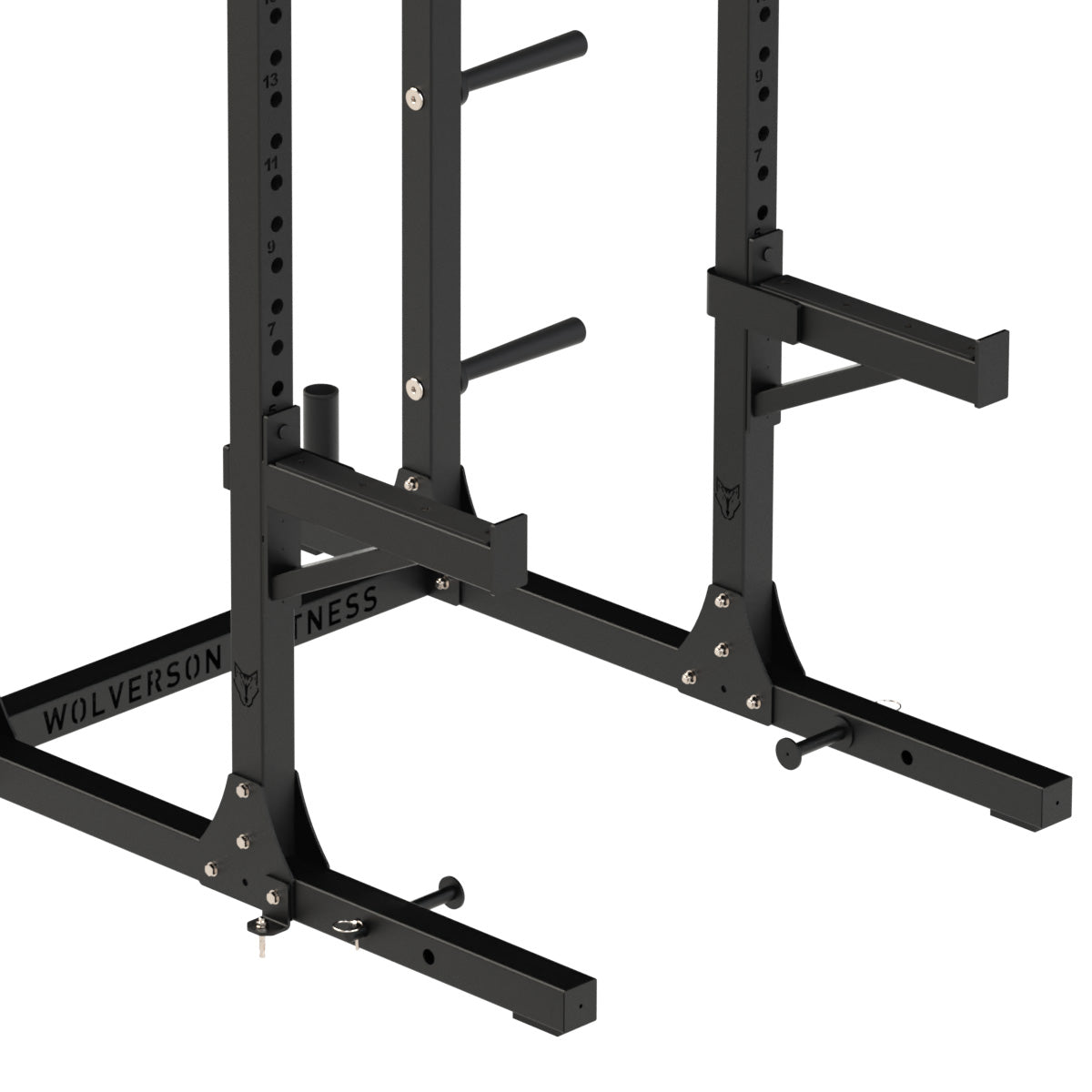RACK GUIDE

A power rack (also known as a power cage, squat cage or squat rack) is the most integral part of any home gym or commercial facility, this piece of kit is essential for performing barbell lifts safely. Racks come in different shapes and sizes, but the most popular are the full rack, power rack and half rack. The space you’re working with is the biggest limiting factor when choosing a rack. Racks are ideal for garage gyms, as they can pack the most punch for the space they take up, giving you the greatest exercises selection in the smallest space. A rack is the most important piece of kit as it allows you train every muscle in your body and perform full-body workouts.

If you’re really tight for space, a folding rack would be ideal as it can be folded against the wall once you’ve finished training, giving you additional space in your home gym. Unsure if you have enough space? Use our gym builder to design your ideal gym! Enter your dimensions and starting design your to-scale gym!

A power rack is the gold standard for performing Olympic lifts, as they provide adequate space for a safe, controllable environment. Spotter arms (or safety bars) can be attached, meaning you can train safely without a spotter if you’re training by yourself. If you have to dump the bar or fail on a lift, you can safety drop the bar onto the spotter arms/bar instead of dropping it on the floor or even worse... on yourself!

Plate storage on the side of the rack let you store you weight plates in an organised, efficient way. These are known as weight spigots, weight pegs or storage poles. For example, our Half Rack can provide additional plate storage, easily capable of storing up to 300kg of plates
Built in band pegs allow you train with resistance bands, adding another training dimension to your compound lifts such as the deadlift, bench and squat





